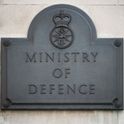On the evening of 20th February 1999, just after Atal Behari Vajpayee, the Indian prime minister landed at Atari on the India-Pakistan border to meet Pakistani prime minister Nawaz Sharif, Outlook magazine decided to change its cover headline. The Indian weekly newsmagazine, of which I am managing editor, had delayed printing its issue to accommodate the historic meeting. After all, a right-wing Hindu government, known for its hard line on Pakistan, had embarked on a conciliatory trip to Lahore. Veterans of the 1947 partition felt that a return to Eden was at hand. Our cover headline was: "Historic Breakthrough."
As we watched the live telecast, Vajpayee arrived on the tarmac beaming, arms outstretched. But Sharif did not fall into them. The Pakistani premier held his Indian counterpart by the shoulders, his smile tight, his face drawn. The two men did not take the road to Lahore together. Instead they flew by helicopter, fearing protesters. We changed our cover line. "Historic Breakthrough" became "The Burden of History."
Three months later, the burden was extracting a serious cost in human lives and threatening a war between two newly-declared nuclear nations. On 8th May an Indian platoon, patrolling the Kargil area of Kashmir, had run into Pakistani intruders and was massacred. Many bloody battles have followed in the past two months, fought at heights of up to 20,000 feet.
The stunningly beautiful Himalayan state has been by far the deepest wound in Indo-Pak relations, ever since 1947, when the Hindu maharaja of the Muslim-dominated state acceded to India. A skirmish in 1948 left Kashmir divided between the two countries, and since then three wars have been fought around it, with ultra-nationalists continually gouging at the wound. All Indo-Pak encounters revolve around Kashmir. At the end of the millennium it remains one of the flashpoints of the world, highlighting, especially for Pakistan, the civilisational faultline which divides us from them.
How did the latest conflict arise? Over a period of several months, Pakistan sent in several thousand highly-trained troops across the Line of Control (LoC) to grab key peaks in Indian territory. Supporting the regulars were a couple of thousand mujahedin-perennial Islamic freedom-fighters, mostly from Afghanistan, funded by the middle east and trained by Pakistan. To evict the intruders, India deployed about 65,000 personnel of the army and air force. By 10th July, about 350 Indian soldiers and officers had been killed in battle, and more than 600 seriously injured. Pakistani casualties were higher. Respected voices on both sides of the border were exhorting their governments to go nuclear.
Some argue that the Kargil adventure is part of Pakistan's master plan for destabilising India and internationalising Kashmir. The Lahore peace initiative-which was happening even as Pakistan troops were entrenching themselves in Indian territory-is an elaborate smokescreen in this plan. Talk peace, wage war; hold out a tacit nuclear threat, force international intervention in Kashmir.
Others, less alarmist, believe it was Indian military laxity which allowed the situation to escalate. On this account, a small batch of Pakistani troops made an exploratory incursion into Indian territory sometime last October; finding no resistance, they summoned reinforcements and began occupying peak after peak until they were accidentally stumbled upon. The temptation to score a few hits on the Indian army, and raise the issue of internationalising Kashmir again, was too great for the Pakistani government. (And for Nawaz Sharif personally, who has been under fire ever since a BBC documentary on his many corrupt activities.)
The war has only partly followed the Pakistani logic. The Indian army has suffered, but, dangerously for Pakistan, India is witnessing a surge of militant nationalism not seen in the past 25 years. As television and newspapers relayed images of dead soldiers-and their stoically grieving kin-even doves became hawks. Most were unhappy with India's policy of "restraint" (that is, not crossing the LoC), and wanted all-out war to teach the Pakistanis a punitive lesson.
Ironically, India's slack defences have been exposed during the rule of the right-wing, Hindu revivalist Bharatiya Janata Party (BJP). But the Pakistani adventure, and the hardline mood it has spawned in India, can only help the BJP in the general election in September. Analysts are now talking of a clear mandate for the BJP-unthinkable just two months ago, when the Congress, under Sonia Gandhi, was on a comeback trail. In the long term this cannot be good news for Pakistan.
What about Nawaz Sharif? If Pakistan is seen to have capitulated militarily to India, or diplomatically to the US, the religious right may target him. Although it has never enjoyed more than 6 per cent of the popular vote, it has destructive street power. Both India and the US want to hold on to Sharif. He remains the safest bet for both countries: a sane and unabashed capitalist in a whirlpool of Islamic fundamentalists and militarists.
Sharif also seems to have come out ahead on Kashmir. Pakistan's long-held aim has been to internationalise the conflict, and that is what is now happening-via the US. India has fought this interference for 50 years, primarily because it does not want a plebiscite in Kashmir which it would lose.
For Pakistan, Kashmir remains the chief rallying point for the nation's anti-India raison d'?tre. And it seems impossible for politicians on both sides to face the issue squarely. In private they will talk of formalising the LoC (drawn along the mutually held positions after the 1971 Indo-Pak war) as a de facto international border. But in public, each side can only echo the rhetoric of "give us back our part of Kashmir." (But there are now some influential voices in India prepared to talk openly about formalising the LoC.)
Does the Kashmir war mean Indo-Pak relations have been derailed for the next ten years? No, say the optimists; we simply go back to the status quo ante, the game of posturing and stand-offs which existed before the Lahore initiative-and then in the much longer run we all accept the LoC. There is no point even asking the pessimists: they have their finger on the nuclear button.
Oddly, the nukes are another casualty of this war. Last year, after the tests, the bombs were justified as the subcontinent's ticket to safety. It was argued that, first, sane nations with nuclear weapons don't indulge in military adventures; second, sane nations don't use nuclear weapons. We now know the truth of the first. We hope the second is left untested.











